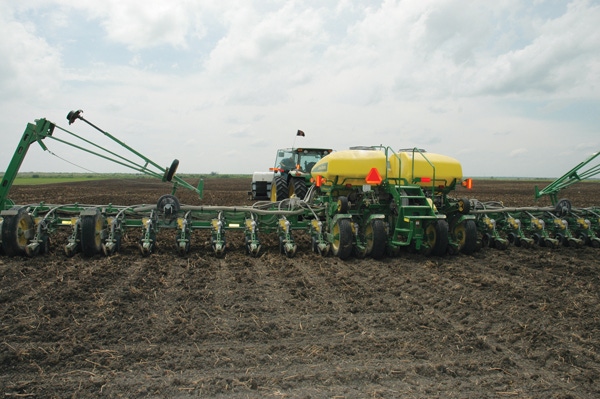
Farmers can expect more volatility in fertilizer prices than they may have been used to until recent swings, thanks in part to the United States changing from a fertilizer manufacturer and exporter to a net importer.
“Production moved out of the United States,” said Oklahoma State University Extension economist Phil Kenkel during the Rural Economic Outlook Conference on the Oklahoma State University campus in Stillwater.
The change from exporter to importer puts price at risk of supply disruption, transportation costs and foreign exchange rates.
Natural gas price also may play a role since it is the second most volatile commodity in the world and accounts for 90 percent of nitrogen fertilizer production. “Nitrogen fertilizer will be tied to energy markets,” Kenkel said.
But the price of natural gas in the United States is not a critical factor since most of nitrogen fertilizer is manufactured elsewhere. Higher world commodity prices may mean increases in fertilizer demand and price.
Crop price effect
U.S. crop prices and fertilizer prices may not be correlated, however. “We can have low commodity prices and high fertilizer prices.”
“Fertilizer prices used to be boring. But since 2008 it’s been a roller coaster ride. The shift to bioenergy crops helped fuel the volatility.”
Kenkel said the food versus fuel issue, as well as increased transportation costs, pushed prices to record highs. “A credit crisis and the economic downturn also encouraged users to delay buying. And China began to hold fertilizer in country instead of exporting.”
Kenkel said fertilizer price accounts for about one-third of total crop production costs.
He also mentioned possible strategies to reduce fertilizer price risk. Forward pricing may not always be practical because of purchase minimums and other limitations.
He said records indicate that the best time to buy urea is the first week in July. “Early April is the worst time to buy. That’s out of sync with the Corn Belt.” Even that strategy doesn’t always work. “In 2008, the first week in July was the worst week to buy.”
Systematically buying fertilizer does reduce price by 5 percent. Buying at the worst time increases price by 15 percent and risk by 55 percent.
Growers may reduce price risk by switching nitrogen forms, application timing “within or between years, from fall to spring, for example,” Kenkel said.
Soil test
Soil tests also may play a role. Growers may drop back to applying the minimum amount of fertilizer to prevent yield loss. Another option is to maintain soil fertility at the optimal level.
Kenkel said growers may consider applying less than recommended fertility rates if:
• Fertilizer to commodity price is out of sync.
• Land tenure is uncertain.
• The fertilizer supply chain is disrupted.
Crop rotation also may help growers manage fertilizer rates.
“Overall, fertilizer prices are likely to remain volatile,” Kenkel said. “But the global supply works well when supply and demand are in balance.”
In the past producers have not been too concerned about fertilizer price risk. But in a more volatile market, a systematic purchasing strategy and flexibility with timing and product may help farmers manage the risk.
About the Author(s)
You May Also Like






